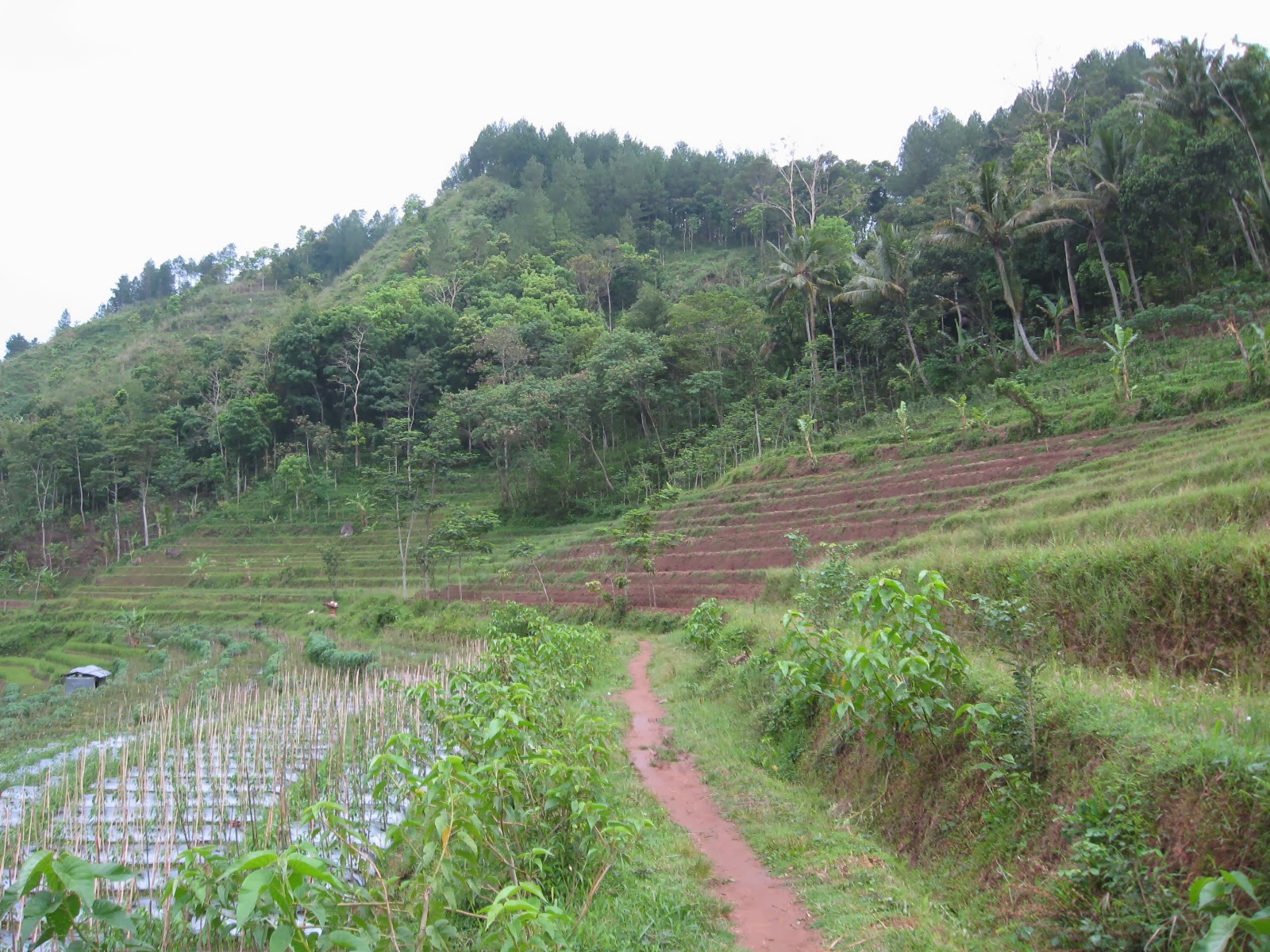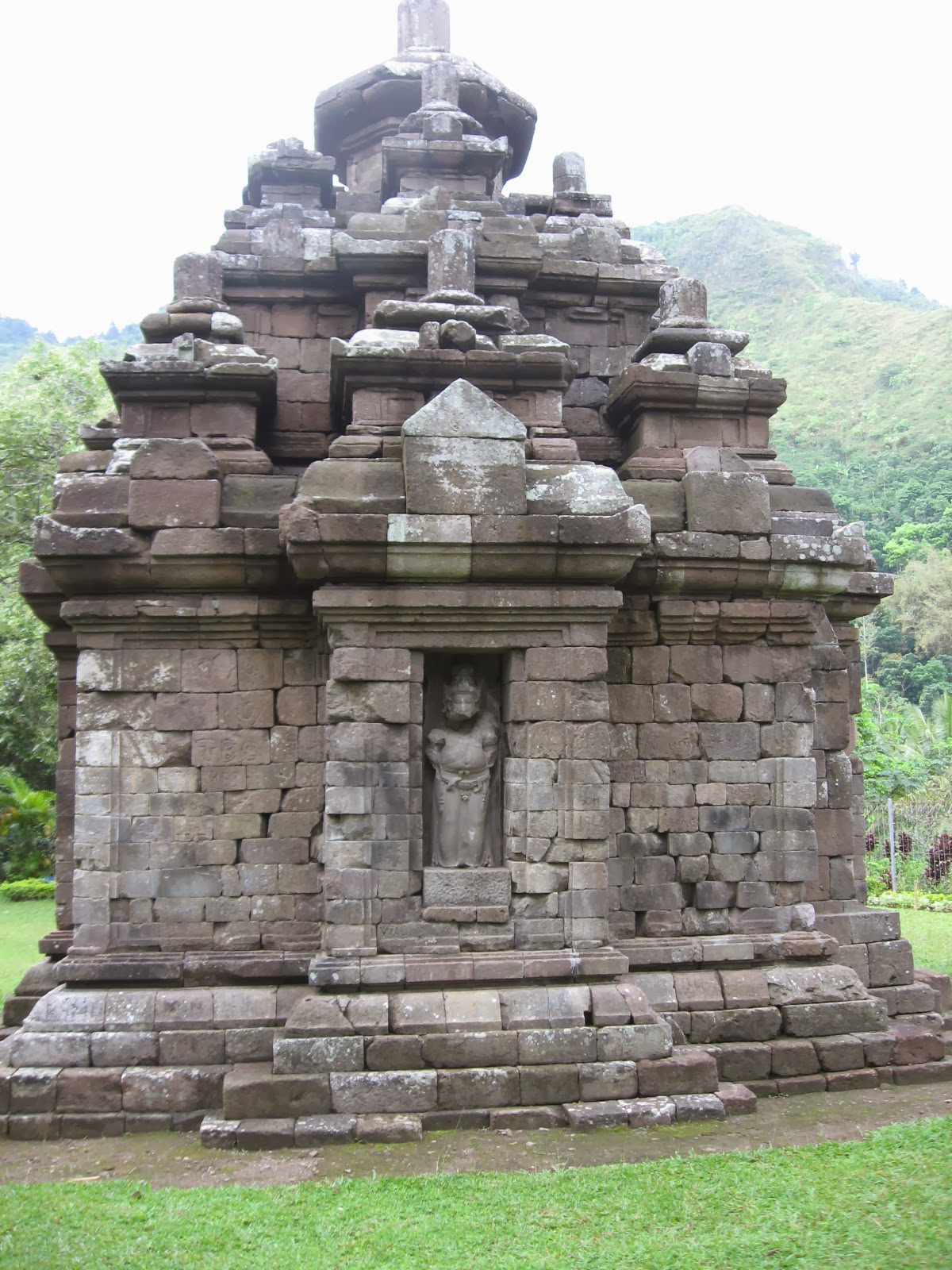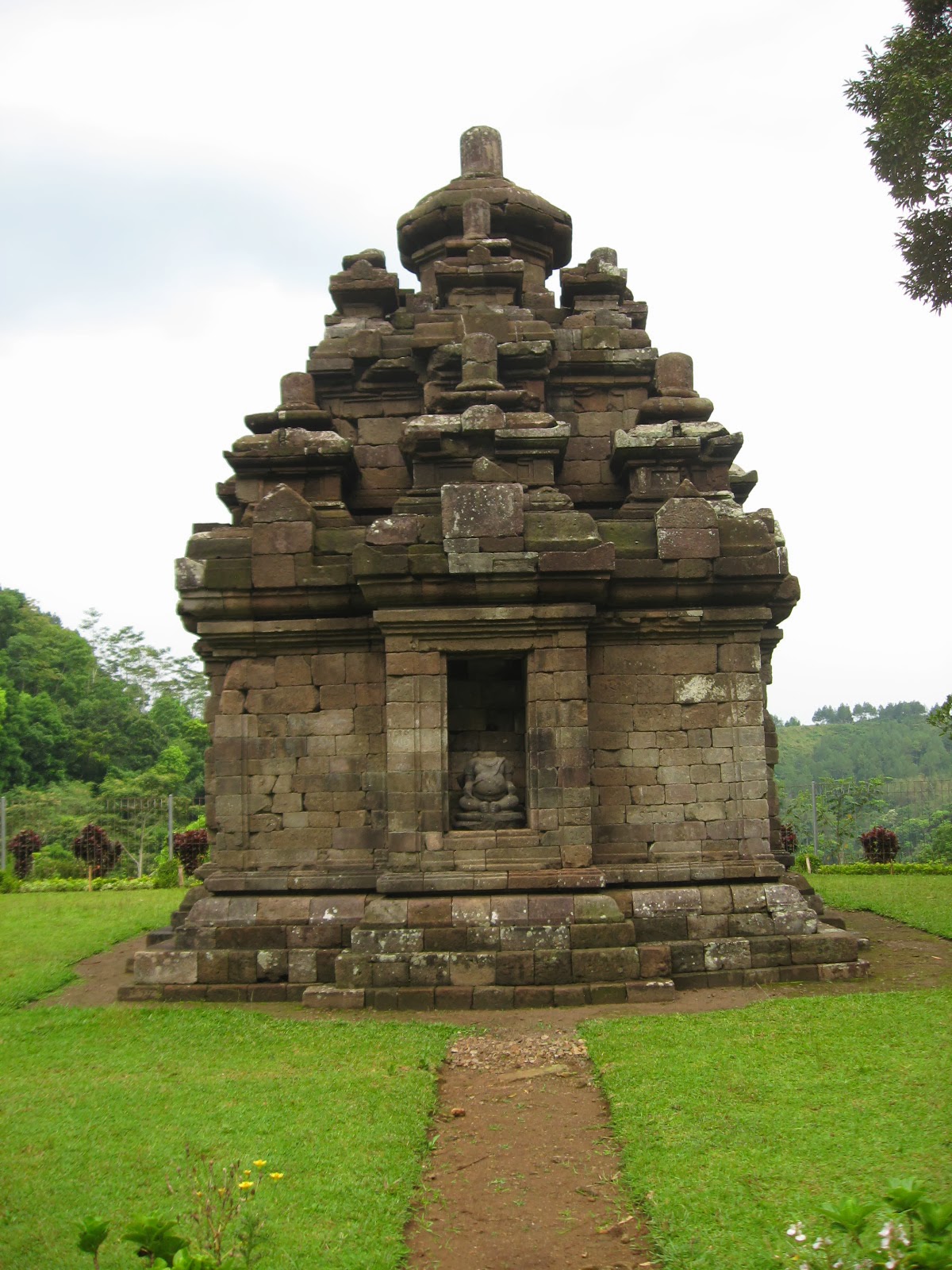I did not land in Magelang. I landed in Semarang, which is about two and a half hours' driving from Magelang. This post will chiefly be concerned with the time following that drive, because the time I spent in Semarang was occupied chiefly by bureaucracy (which is one of my weaknesses as both a typist and a human being--it bores me, and I always misspell it "bureaucrazy") and a stop at McDonald's, each of which are more or less the same everywhere. Indonesian bureaucrats tend to dress more comfortably, bureaucrats in Semarang, near the beach, are more friendly than bureaucrats in Magelang, near the Akadamy Militir (military academy), Indonesian McDonald's serves fried chicken, and none of those things strike me as being remarkably interesting.
I suppose I would feel differently if I were a bureaucrat, if I hated hamburgers, or if I were in charge of hiring a foreign teacher into a school I ran. It turns out that my employers flew me into Semarang so I could get a work visa from friendlier bureaucrats. For them, apparently, the drive was easier than dealing with the bureaucrats in Magelang. I thought the drive was nice enough, though it lent itself better to pictures than words, and my camera was in the trunk. There were jungles; there were rice fields; there was a volcano; there were ruins of old Dutch fortifications. I was told that the volcano exploded two years ago, but not to worry. Pak Iwan, who runs a car company, his wife Bu Yenni, and my friend Maria Teguh, who I met in Bozeman this summer, were reassured when I told them that I live near Yellowstone, so I am used to not worrying about volcanoes.
Once arriving in Magelang, there was not a moment during which I did not feel conspicuous, save for those moments I was sleeping. To be polite, I did not mention this fact, but it was somewhat tiring. The first thing we did in Magelang was go shopping for a new shirt, one in a traditional Indonesian style called batik. The pattern of the shirt is novel and pleasing; the cut is similar to Hawaiian shirts, which I find quite comfortable. I was amused to learn that I wear a 3L in Indonesia, and that this is the largest size commonly manufactured. I resolved then what I have considered for some time: that I will only eat two meals here on most days, which will save me some time to keep up with my travel blog while also making progress with my other writings, and will also get me down to an Indonesian size XL, at which I would still be big and strong by the local standards, but no longer fat and unhealthy by my own.
The store we went to was called Matahari, which I'm told means "sun" in Indonesian. It means something different in the US, especially when placed next to a picture of a beautiful woman (which, in a clothing store, is often). I figured there was no point in mentioning this.
While in the Indonesian mall, I saw another policeman similar to the beret-wearing cops in the Singapore airport. He looked me over more than once, which hardly surprised me. I still weighed 100 kilos, after all, and I was still wearing orange.
After shopping, my hosts checked me into my hotel, where I cut my hair, trimmed myself to small sideburns and a short goatee, and rested a little bit. I watched some soccer on Al Jazeera sports. Soccer's not my favorite sport, but I do find it entertaining. This was Serie A, which is good soccer. I suspect I'll watch a fair bit more of it than I used to. They don't really show hockey on Indonesian TV. Soccer has a similar feel in the back-and-forth play and the suspense added by difficult scoring.
I was told that Pak Iwan and Bu Yenni would come get me at the hotel and take me to a dinner party at six o'clock, where I would meet people from the school. At 6:15, they had still not arrived, so I decided to walk around the hotel grounds a bit, still within sight of my room. It was at that point that a hotel employee told me that my presence was expected in the hotel dining room. Soon after that, I learned that my presence was not expected so soon as I had been told. Other than the employees, I was the only one there.
Eventually, others arrived: Maria, Pak Iwan and Bu Yenni were there. Pak Tanto, the owner of the hotel, and Bu Tanto, his wife, were among the first to arrive. Most of the other guests were his family. He has five children and nine grandchildren, and based on the ages of some of his grandchildren, perhaps great-grandchildren as well. Pak Tanto does not look like a great-grandfather. He looks like a man in his late forties or early fifties, and I tell him so after he tells me his age, which is considerably older. He was about my height, or maybe taller, making him a big man by Indonesian standards. He and I are both a head taller than many of his male employees. Pak Tanto seems like a very nice man. He smiled a lot, and he was happy every time I tried some of the food; happier when I liked it. This was his party, for his family and some family friends.
Pak Tento's grandchildren and Bu Yenni's daughter took turns hurrying me to try the native Indonesian dishes. They kept interrupting me to tell me to get something new or to finish what I was eating. They were insistent, but friendly and welcoming. There were three traditional soups (goat, chicken and sticky rice), a grilled chicken skewer with sauce and vegetables, and a couple of deserts. All dishes were rice-based or included rice, which is a favorite in Indonesia. I really enjoyed two of the soups and the chicken. The deserts were okay, but I pretended to like them more than I did because I might like them better when I'm not stuffed to the gills. I found the texture and flavor of the sticky rice somewhat unpleasant; everyone said it was okay, because I liked the other dishes. Many people came by to introduce themselves, including some of the people who run the school. One of them wanted me to come see the school and meet the teachers at 10 the next morning, so I agreed.
I was tired even before the party started. I had a good time, but once it ended, I was very tired. It was not long after getting back to my hotel that I went to sleep. In that time, Pak Iwan and Bu Yenni came by with a few supplies, most notably a big jug of water like you would see in an office comedy or an actual office, depending on what you do in your everyday life. I figure that this will be a very useful thing to have, if I ever figure out how to use it.
Early the next morning, Pak Iwan and Bu Yenni come by again. They take me out to "American Breakfast" at KFC, which evidently involves pancakes, scrambled eggs, and chicken porridge, depending on your tastes. I don't even know if American KFC serves breakfast, and I've never heard of chicken porridge, but this is another one of those things I feel there's no reason to mention. The pancakes are passable, and the scrambled eggs are tasty, so I just tell them that I'm enjoying the food.
After breakfast, we went to both the traditional street market and the supermarket. At the traditional market, I felt very large again. The alleys are narrow, and there are tents set up in some places, which are short enough that I have to duck to walk into and out of them, or to stand inside. People coming the other way had trouble getting past me, because I have broad shoulders and a chest and a big belly. I'm shaped sort of like a big box, and any way I turn, I take up too much space. Until I lose some weight, I will have to stick to the supermarkets or to the sellers out on the bigger streets. I did manage to buy some vegetables, some fruit, and some eggs. The supermarket was a little easier. There, I bought some dish soap, some dish sponges, a dish towel, and a pump for my big jug of water. Then, Pak Iwan and Bu Yenni dropped me off at the hotel, where I had just enough time to put my food away in the fridge before I walked over to the school.
I do not mean to brag when I write this; I am merely explaining my experience. My arrival is big news at SBTH, the school that hired me. There are classes on Saturday in Indonesia, but at SBTH, they only do extracurricular activities and such on Saturdays. Still, the school was full of kids and teachers. All of the teachers and many of the kids knew who I was before I introduced myself, and were very enthusiastic. Some of the kids were shy, but the teachers all wanted to meet me. I took a full tour of the school. This was when I learned that I had been somewhat misinformed as to why I had been hired. It wasn't to a degree that I felt like I had been lied to, but to a degree that it crystallized my early planning somewhat. The chief problem with English instruction at SBTH, as the staff sees it, is that the students learn to read and write English, but not to speak it.
This is a thing I believe I know how to remedy.
After the tour, the teachers all got together for a staff meeting. I was asked to stand in front of a microphone, where I would introduce myself and say hello to all the teachers. I was asked to go on for longer than I felt was relevant, but apparently I am big news, and people wanted to know about me. They, in turn, would introduce themselves to me, although they were not asked to go on, and I believe it was discussed at one point that they should hurry the process a little. Nonetheless, I was able to learn that all of them were friendly, some were shy, and a few had very appealing senses of humor that I hope to hear more of. I am not wont to use the phrase "good meeting," but I do believe that it applies here. It was a good meeting.
After the meeting, I went back to the hotel room, changed out of my sweaty clothes, and rested for a while. I think I might have watched some more soccer. I know I hooked up the water pump I bought. The instructions were in Indonesian, but I didn't really have to look at them to figure out how to put it together. It works like a charm, and now I have a cheap, efficient source of drinkable water!
Before long, Pak Iwan and Bu Yenni came by again and asked me to go to lunch with them. I had some traditional Indonesian fried rice, which I thoroughly enjoyed. After lunch, I went back to the apartment to rest, drink a ton of water, and take a nap. Thus ended my first 24 hours in my new hometown.
























































.jpg)
